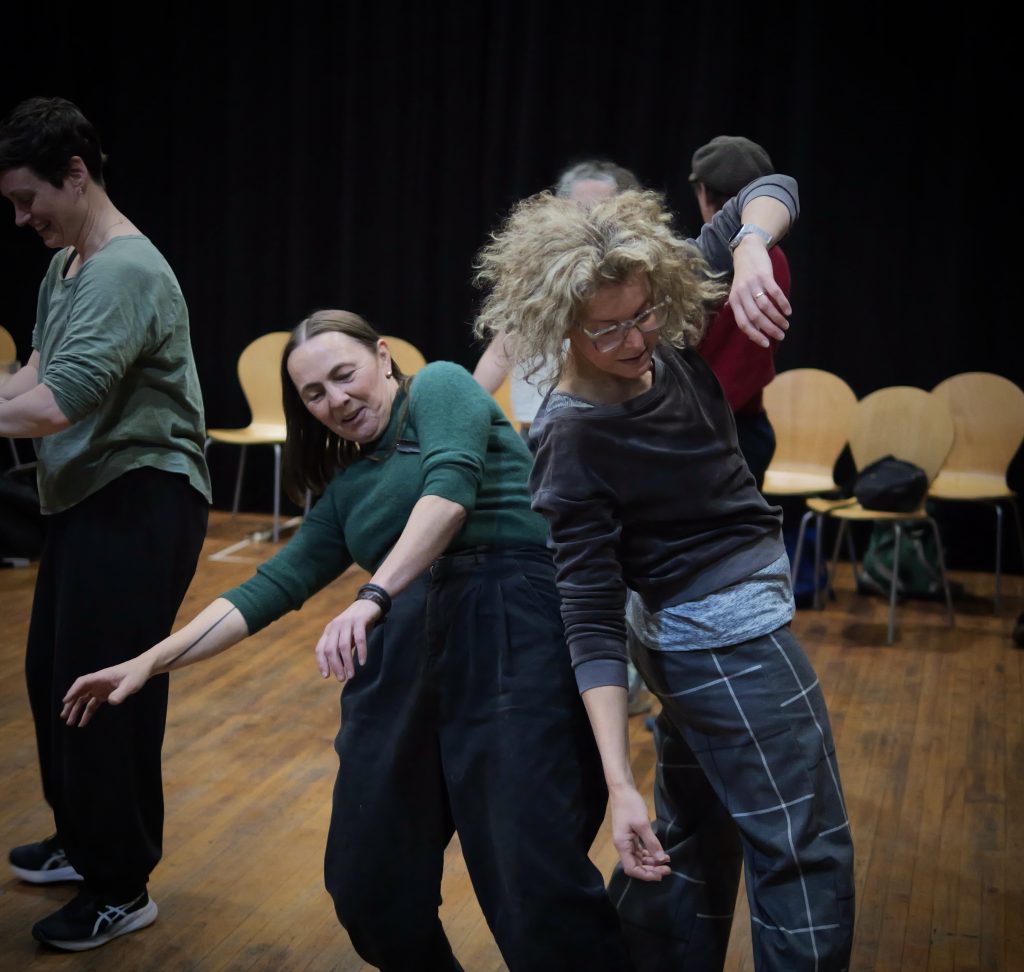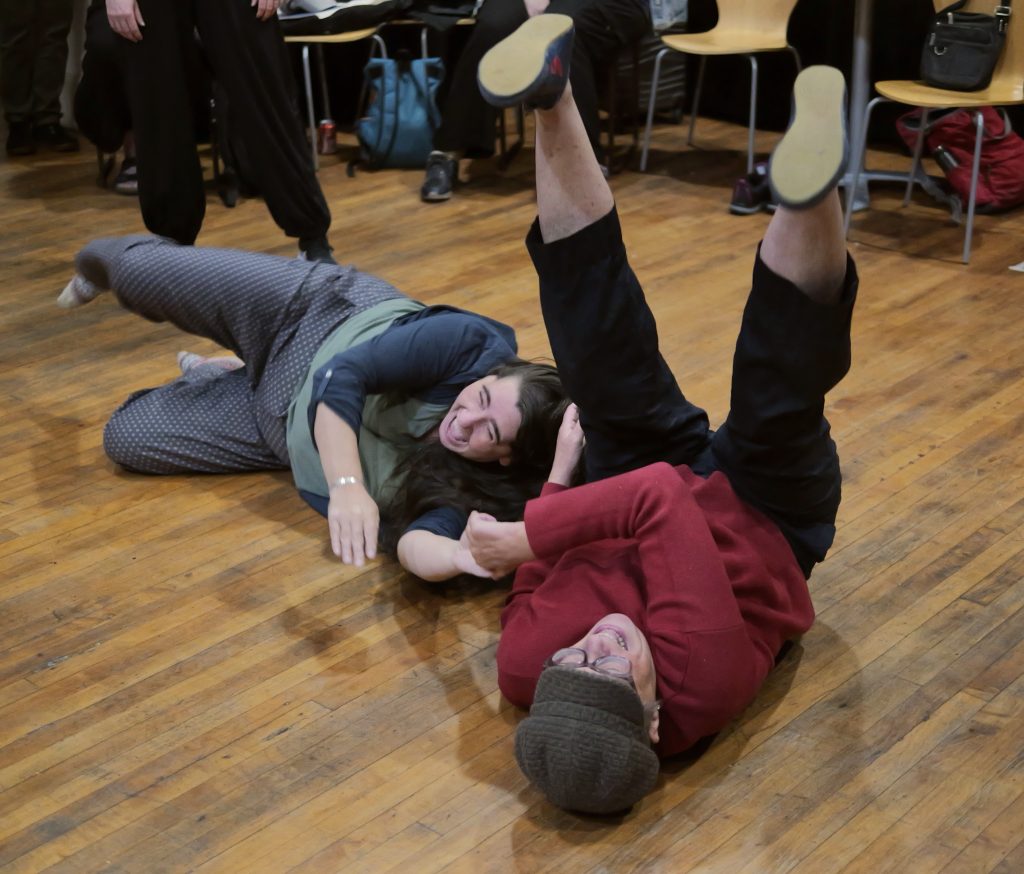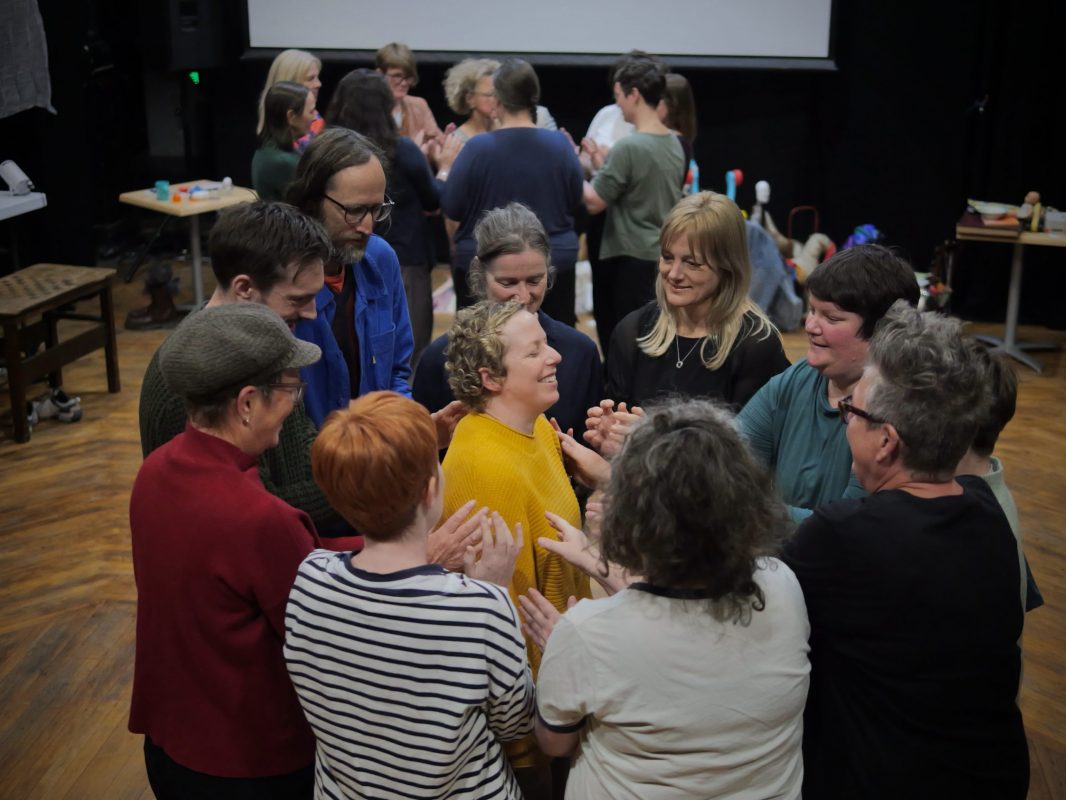Kitty Winter
The game: a supported wobble
We stand close together in a circle, shoulders almost touching, hands raised and open, ready to catch. In the centre, one person stands with their eyes closed. They tip their weight front and back, side to side, playing with being off balance but knowing that if they tip too far, we will catch them and guide them back to the safe space between us. There is warmth inside the circle, we can hear each other’s breath, there is laughter.
Afterwards, we talk about the feeling of taking someone’s weight. It feels good to absorb and support their body, to feel the weight flow down through arms and spine, through legs and feet and into the floor. There is care in the act of taking weight and keeping someone safe. We talk too about the disorientation of wobbling, the loss of control, and the fear tied up in that. As adults, we forget how to trust our bodies to the care of others.
We push toddlers towards the goal of physical autonomy; ‘Does your child walk either up or down at least two steps by herself? Does your child run fairly well, stopping herself without bumping into things or falling over?’[1] What do we miss when we leave behind the feeling of being supported and giving support?
[1] Questions from the ASQ 24 month questionnaire
The game: first steps

We make contact with someone, through touch, proximity or eye contact. We hold that contact and wobble together, playing with the point of toppling over. Then together we take a step as we fall out of the topple. The fun of the game is to enjoy the sensation of ‘about-to-step’, the anticipation in the teeter. As soon as we step, the game between us is over.
Afterwards, some of us admit to cheating- to exaggerating how out of control we are, using the embodied knowledge of dance training to keep our balance, and to disguise our cheating. We acknowledge that our training is a privilege. We talk about who gets to play with their body in this way, and who doesn’t. Who is granted space and permission to move in a way that is pleasurable, not functional. How early in our lives that permission is quietly taken away.
The game: falling as journeying

We travel from one end of the room to the other, moving forward by falling over. The game is to explore the possibilities of falling as a way of travelling, instead of as a failure while travelling.
We start carefully, letting joints soften and collapse sequentially so the fall has the quality of melting. Then someone throws their arms in the air and falls from standing all the way down to the floor- a proper flying, rolling fall, and we can’t help but say ‘wheeee!’ at the sheer joy of it.
